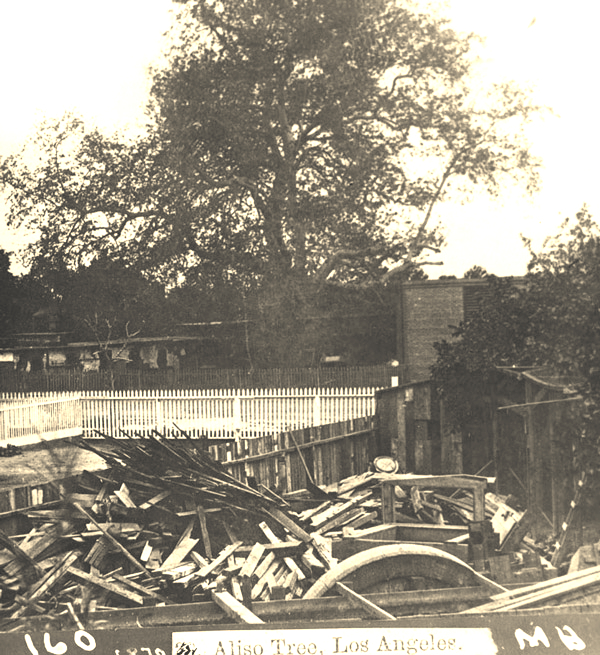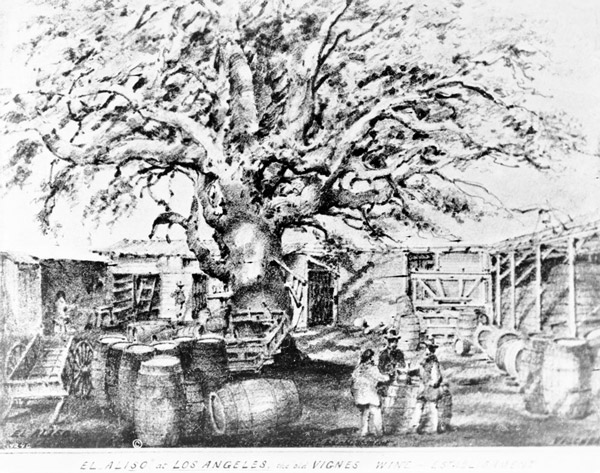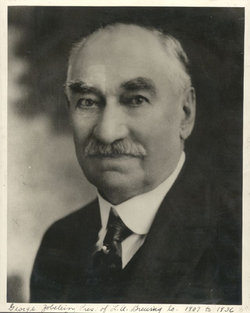History of the Brewery Artist Colony and Los Angeles
Brewery folk are often asked about the history of this place. We've heard some tales of things that have supposedly happened here over the years which definitely never happened, and many, many misconceptions about the evolution of The Brewery. That said...
With no intenion of dispelling any myth or mystique threaded through our unique community, we offer these stories of interest relating to downtown and East Los Angeles, the Brewery itself, and a few of the people who've passed through here.
Warning: this link can be a dangerous bunny hole which can eat up your entire day. We suggest you just read the timeline you came for (click the "Read More" link below) and skip the thing about the tree entirely.
This is the story of the 400-year old sycamore that Aliso St was named for and which also used to be such a feature in early LA and, for a short time, of the Maier & Zobelein Brewery. The tree was 60 feet high and 200 feet wide, making it a dramatic landmark back in the era of single-story buildings.
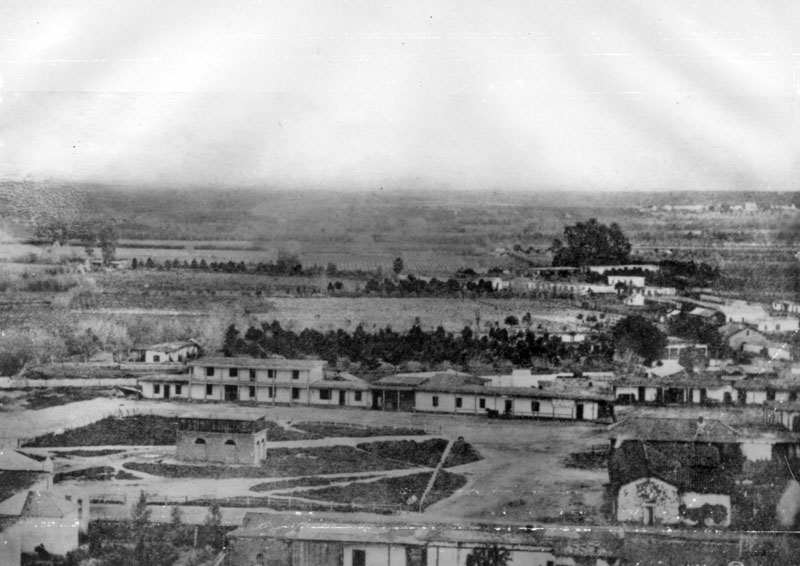
It's on the right beyond the Plaza in this 1857 photo from Fort Hill:
You might not expect it at first glance, but in addition to a debt to a long-dead sycamore tree, the Brewery Artist Colony owes a not-insignificant debt to the lavish, German-style beer gardens of the late 19th century. In the years after the Civil War, waves of new immigrants and the national craze for German-style "beer gardens" created such a demand for malted spirits that beer replaced hard cider as America's most popular alcoholic drink.
In response to that booming demand, the Los Angeles Brewing Co. opened in 1897 on the banks of the Los Angeles River, whose then cool and flowing waters were a key ingredient of the beer. Local property owner Elijah Moulton joined with local businessman P. Max Kuehnrich & brewer Edward Mathie to open the first Brewery & Beer Garden in town.
GROUND BROKEN FOB ERECTION OF A NEW PLANT
Will Turn Out Sixty Barrels of the Beverage per Day—Eastern Capital Interested '
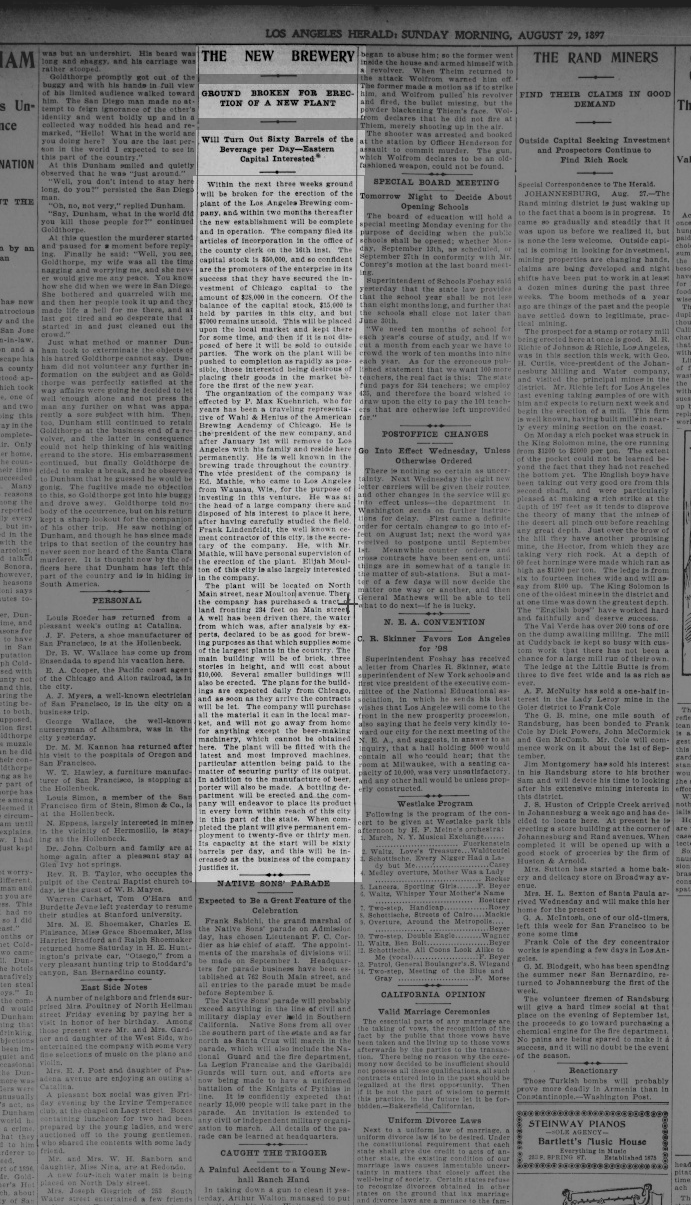 Within the next three weeks ground will be broken for the erection of the plant of the Los Angeles Brewing company, and within two months thereafter the new establishment will be complete and in operation. The company filed its articles of incorporation in the office of the county clerk on the 16th Inst. The capital stock Is $50,000, and so confident are the promoters of the enterprise in its success that they have secured the investment of Chicago capital to the amount of $25,000 in the concern
Within the next three weeks ground will be broken for the erection of the plant of the Los Angeles Brewing company, and within two months thereafter the new establishment will be complete and in operation. The company filed its articles of incorporation in the office of the county clerk on the 16th Inst. The capital stock Is $50,000, and so confident are the promoters of the enterprise in its success that they have secured the investment of Chicago capital to the amount of $25,000 in the concern Joseph Maier
(Oct. 30, 1851 – July 11, 1905)
May 13, 2013 -- In the 1870s, Eberhard Anheuser and Aldolphus Busch were just starting to build their brewery empire in St. Louis. Other recent immigrants were doing the same thing in other cities -- Frederick Miller, Frederick Pabst and Joseph Schlitz in Milwaukee; Bernhard Stroh in Detroit; and Adolph Coors in Golden, Colo.
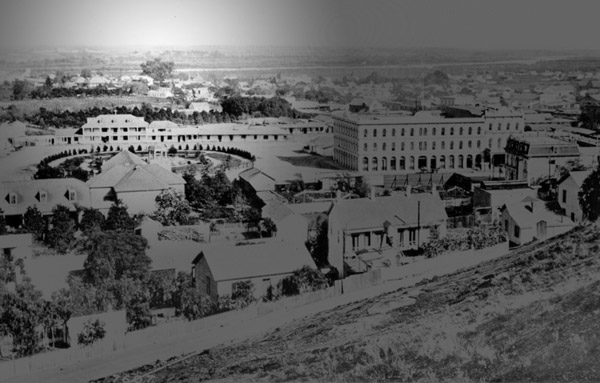 Rancho La Cienega O' Paso de la Tijera, is the lengthy name given to a series of adjoining adobe structures located on the eastern side of the Baldwin Hills. The history of these early adobes is obscure. It is uncertain when they were constructed and by whom. At 3725 Don Felipe Drive, the structures are situated within the city limits of Los Angeles and possibly may be the oldest surviving building in the city. They may have been built between 1790 and 1795. The Avila adobe on Olvera Street in the downtown area was known to be built in 1818, almost thirty years after the adobes on Don Felipe Drive, but it retains the honor of the oldest residence in Los Angeles.
Rancho La Cienega O' Paso de la Tijera, is the lengthy name given to a series of adjoining adobe structures located on the eastern side of the Baldwin Hills. The history of these early adobes is obscure. It is uncertain when they were constructed and by whom. At 3725 Don Felipe Drive, the structures are situated within the city limits of Los Angeles and possibly may be the oldest surviving building in the city. They may have been built between 1790 and 1795. The Avila adobe on Olvera Street in the downtown area was known to be built in 1818, almost thirty years after the adobes on Don Felipe Drive, but it retains the honor of the oldest residence in Los Angeles.At 451 N. Hill Street in Downtown Los Angeles, a memorial wall dominates the side of a building. It depicts an important moment in California history, in particular, Los Angeles’ emergence as an American city.
The memorial wall, Fort Moore Pioneer Monument, is a reminder of the importance Fort Moore Hill had in the City of Angels. Over the years, the hill held a fort, an exclusive estate, cemetery, a high school, a brewery and beer garden, and a few other oddities. It was one of the city’s greatest gem, and one of its lost treasures.
Time has not been kind to this hill; progress swept much of what was on it away. And, what wasn’t removed was covered by urban sprawl. It’s a shame considering that the hill was where Los Angeles emerged as a modern metropolis.
Los Angeles Steam Plant No. 3
Originally posted on August 19, 2019
It is three times the largest steam turbine unit on the Pacific Coast and so vast in its proportions that the machinery must be first installed and the massive steel and concrete buildings constructed around and over it. A Times photographer was fortunate in securing a picture of the turbine, showing its interior magnesium-coated revolving element before the steel jacket had been put in place, and also of the Sterling super-heating boilers, the only ones of the kind ever built, before the steel-coated brick enclosure had been constructed around them.


